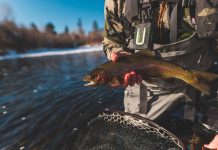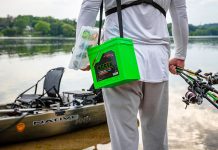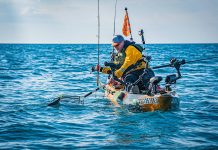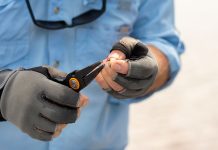rofessional photographer Will Richardson wonP’t soon forget this shoot. He was in a raft following a kayaker through heavy rapids with whitewater filmmaker Ken Whiting. “Our raft got caught in a hole and I was bounced around like a rodeo clown,” Richardson laughs. In the past, this might have led to thousands of dollars in soaked equipment, but advances in waterproof fishing gear mean Richardson’s wild ride was nothing more than a momentary diversion.
Waterproof Fishing Gear Gets Serious
Richardson’s camera bag is a perfect example of recent advances in waterproofing technology. Instead of a hard camera case, which would be more difficult to store, Richardson put his trust in a heavy-duty Watershed drybag. After a wild ride, the photographer and his gear were ejected from the raft and swept through the rapids, but they both emerged unscathed. “I used my camera bag as an extra floatation device,” he says.
Promising to protect expensive gear is a bold claim. Natalie DeRatt, part of the design team at Watershed says the company takes the responsibility seriously. “The technology is the same used by Navy SEALs to keep their equipment safe.”
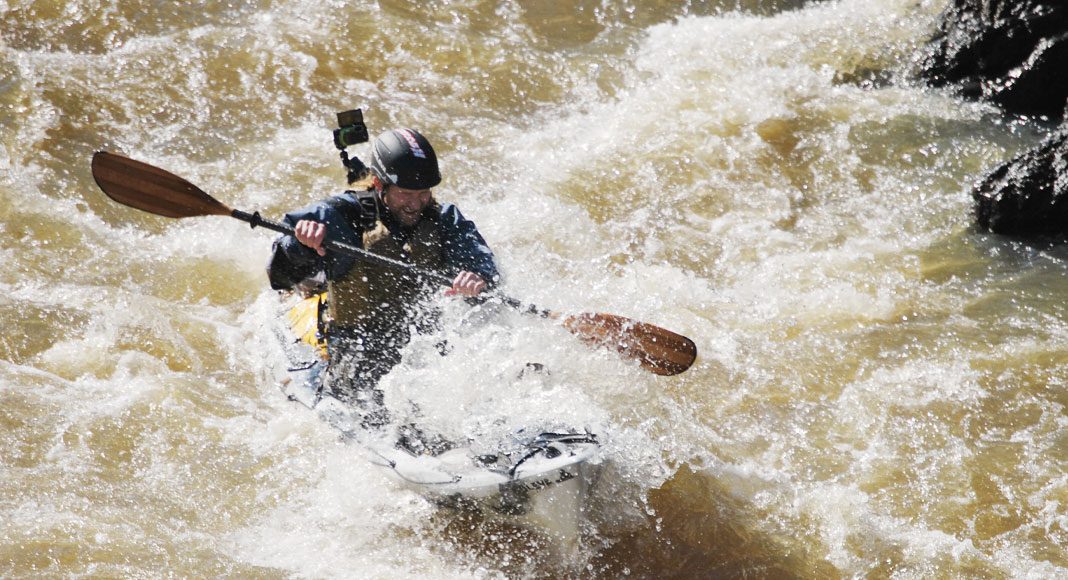
To start with, polyurethane fabric is coated for five times the abrasion resistance. At the seams, the material is layered two to three times and sealed with high-pressure radio waves. Radio frequency welding melts plastic together so the seam is stronger than the original material.
Instead of a zipper, Watershed uses a ZipDry closure similar to a food storage bag. The ZipDry gaskets are easy to seal and reopen. Carballo adds, “The bags stay sealed in up to 300 feet of water pressure.” The inside of the bag is padded with cloth-covered foam and air trapped in the bag further protects expensive gear.
Outerwear to Keep Water Out
The same technology is used in outerwear to keep a kayaker as dry as his gear. Modern design and advanced materials offer comfortable options for keeping the elements on the outside.
Jeff Turner, director of sales at Kokatat, says all waterproof fabrics are not created the same. To develop the most effective outerwear, Kokatat’s staff of discerning kayakers test every product in the wild waters of Northern California.
Turner says the best breathable fabrics combine three or four layers of material, each with a specific purpose. “Basically, all breathable fabrics use a durable outer layer, rapidly moisture wicking inner layer with a microporous film in between.” The middle layer allows moisture to leave the inside of the garment while preventing water from entering from outside. To keep the fabric from becoming saturated, the outer layer is coated with a water repellant.
Combining high-tech materials isn’t easy. Turner points to Gore-Tex, the original waterproof-breathable fabric, as the leader. “Their proprietary PTFE micro-porous film is unmatched for breathability and all parts are produced in Gore-Tex owned and strictly controlled factories,” he says.
Mustang Tests with the Best
In the race to design better waterproof fishing gear, product testing separates the best from the rest. Hayden Soboleski, research and development engineer at Mustang Survival, calls their top-of-the-line customer “elite users.” The company’s pro staff includes tournament-level anglers, professional watermen and sailboat racing crews. Their research provides data allowing Mustang to design safety gear for the Canadian military and search and rescue services.
But before their creations hit the water, Mustang first tests every stitch and seal in their in-house pool. “We put all our raw materials through a slew of tests to make sure they remain waterproof and breathable while surviving abrasion and puncture tests,” Soboleski says.
In addition to the material properties, Soboleski says a large part in effective waterproof outerwear is in the cut and fit. “Elite users are never satisfied,” she jokes. In response, Mustang focuses on making outerwear less burdensome. “So the user can completely focus on what he’s doing and not on what he’s wearing,” Soboleski says. Adding adjustment points, designing a hood that moves and pockets and closures that shed water play an equal roll in keeping the angler dry.
What’s Next for Waterproof Gear?
Soboleski predicts the next stage will be custom lines for specific users. “We’re developing gear now that blends comfort and performance for new audiences.” She points out some users need breathability and others require more abrasion resistance. Soboleski hints, “Soon, anglers will be psyched to have their own specific lines.”
This article was first published in the Fall 2020 issue of Kayak Angler Magazine. Subscribe to Kayak Angler Magazine’s print and digital editions, or browse the archives.
In whitewater it’s too late to check for leaks, so use the best waterproofing technology. | Feature photo: Sonya Anthony

